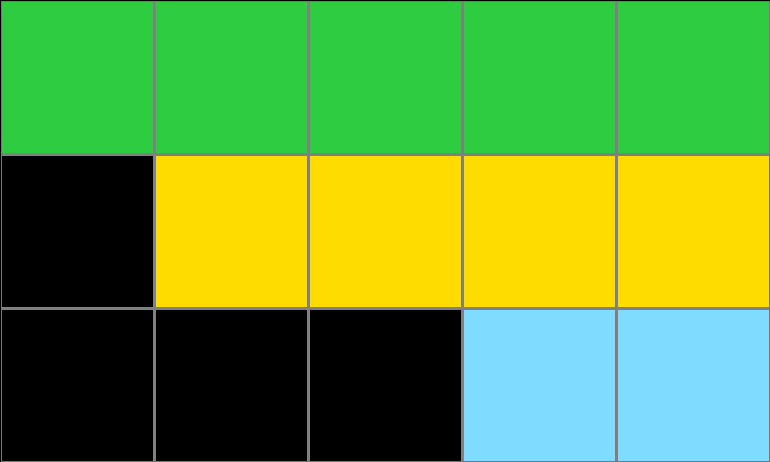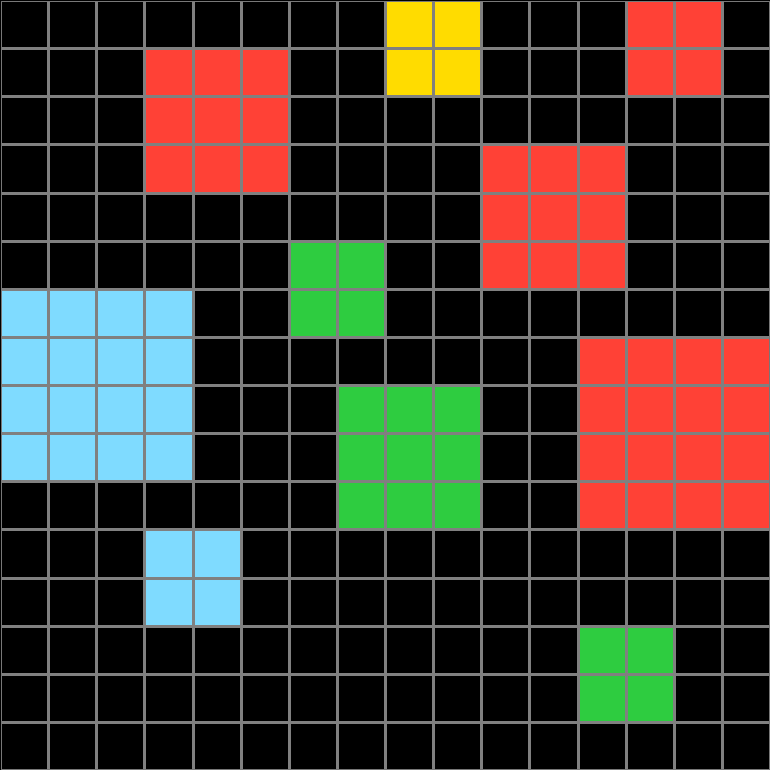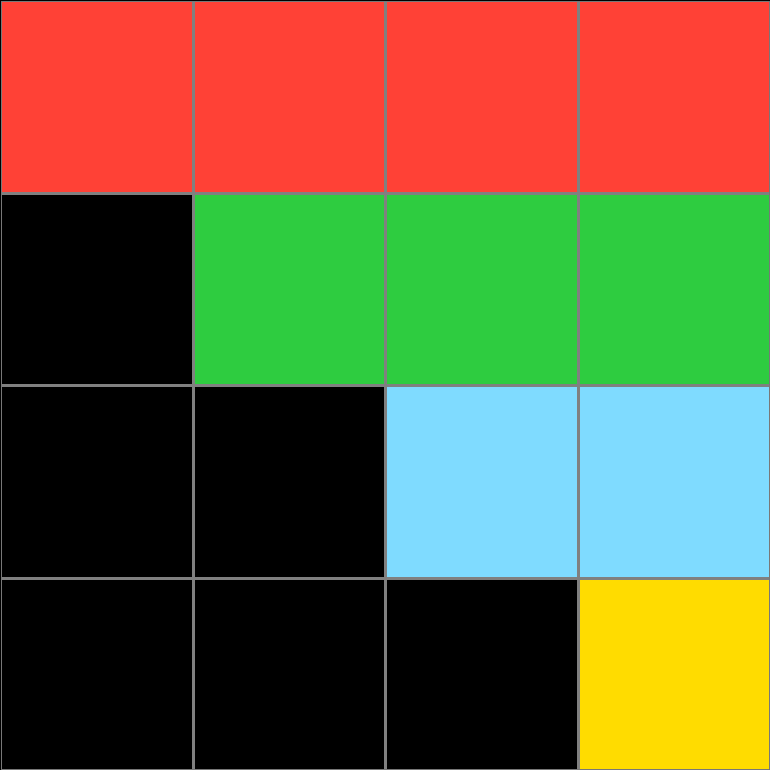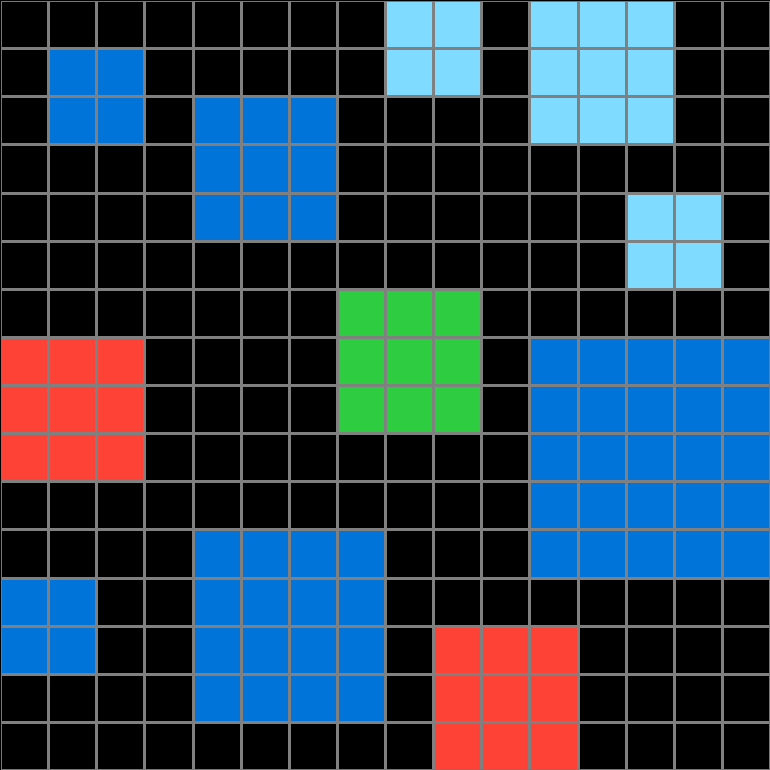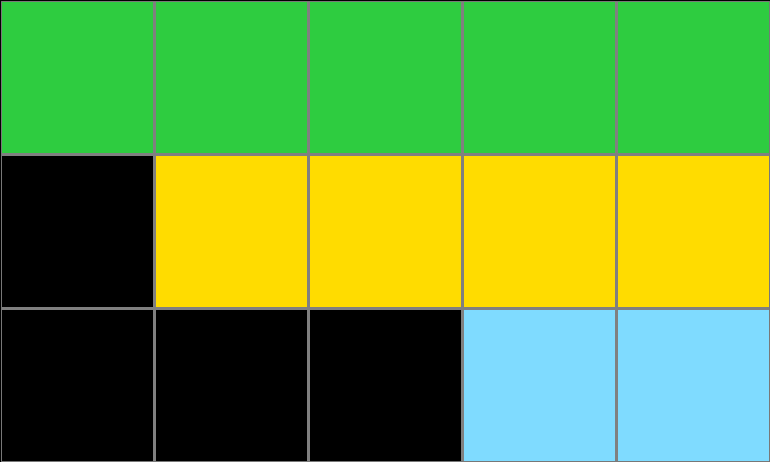Participant 1
Initial description: The output shows the number of colored squares starting with the largest number of colored squares at the top and progressing downwards to the last number of colored squares.
Final description: The output shows the number of colored squares starting with the largest number of colored squares at the top and progressing downwards to the last number of colored squares.
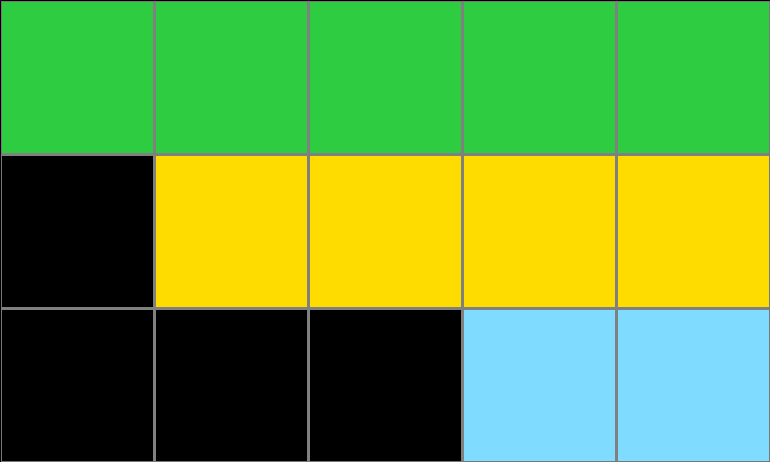
Participant 2
Initial description: I took the farthest and highest color to the left and put them in a corresponding order.
Final description: Put the most squares in a corresponding order--the largest color to the smallest. Two blue squares would go to the bottom. ETC.
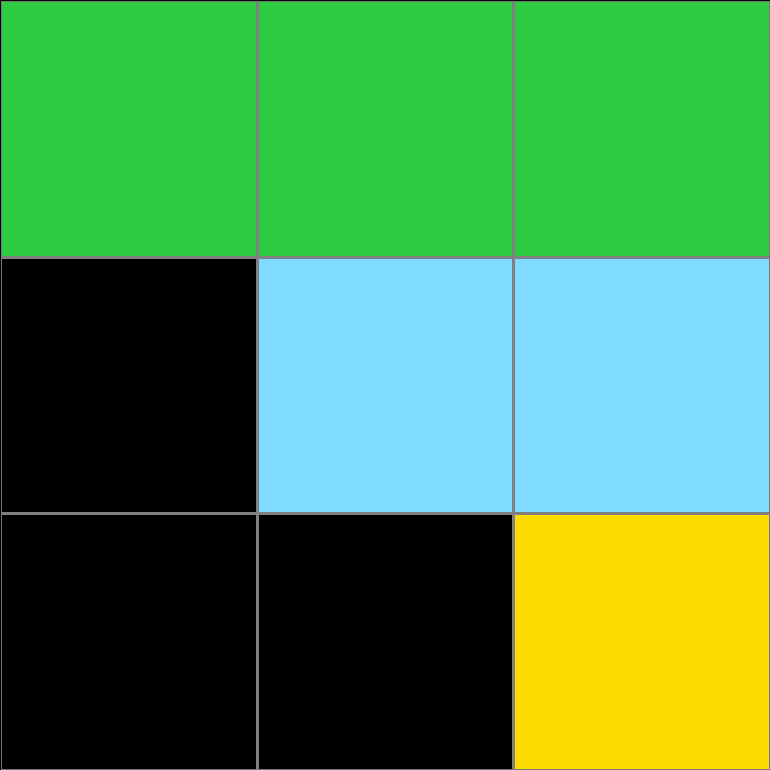


Participant 3
Initial description: Create a pattern starting with largest numbered color squares at the top down to the smallest at the bottom, filling in the corresponding number of them from the test input.
Final description: Create a pattern starting with largest numbered color squares at the top down to the smallest at the bottom, filling in the corresponding number of them from the test input.
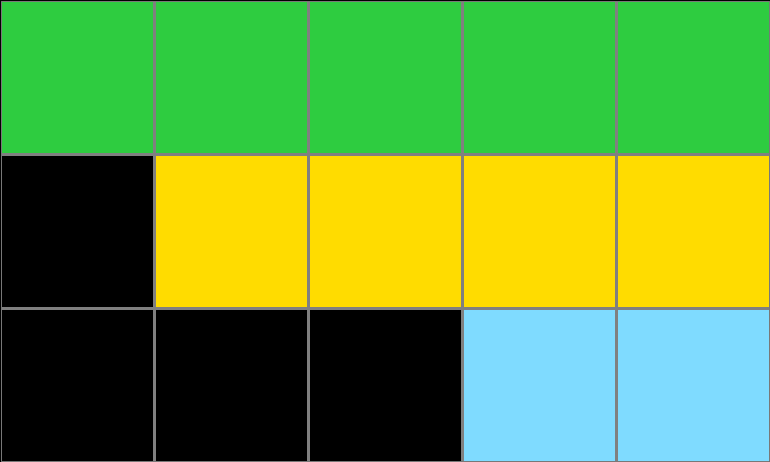
Participant 4
Initial description: Create a bar graph representing the number and the color of the boxes from the test input.
Final description: Create a bar graph representing the number and the color of the boxes from the test input.

Participant 5
Initial description: The total number of colors that appear in the input grid determines the total number of rows in the output grid. The number of times a colored square appears in the input grid (e.g. five green squares) determines the number of times you display a colored square in a row in the output grid. The colored squares in the output grid are displayed from largest to smallest.
Final description: The total number of colors that appear in the input grid determines the total number of rows in the output grid. The number of times a colored square appears in the input grid (e.g. five green squares) determines the number of times you display a colored square in a row in the output grid. The colored squares in the output grid are displayed from largest to smallest.
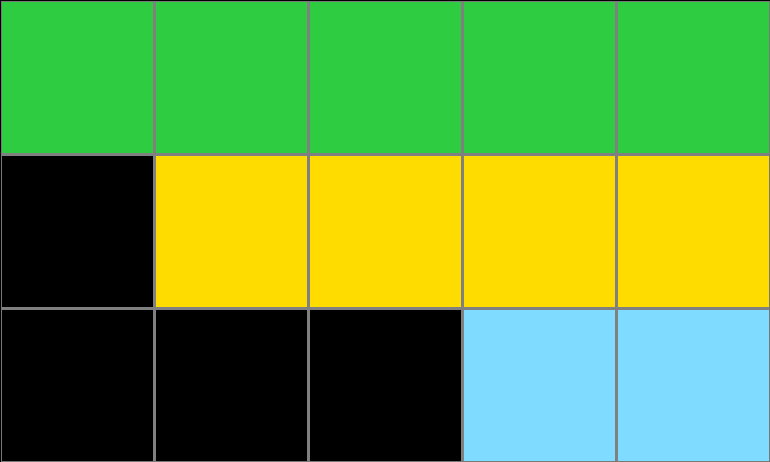
Participant 6
Initial description: The rule: the most prominent color goes on the top, represented as three blocks. The colors are then arranged in descending order down the grid, which varies in size depending on how many colors there are.
Final description: The number of color blocks in output is the same as the number of color blocks in the input grid. Colors are sorted from most prominent to least prominent.
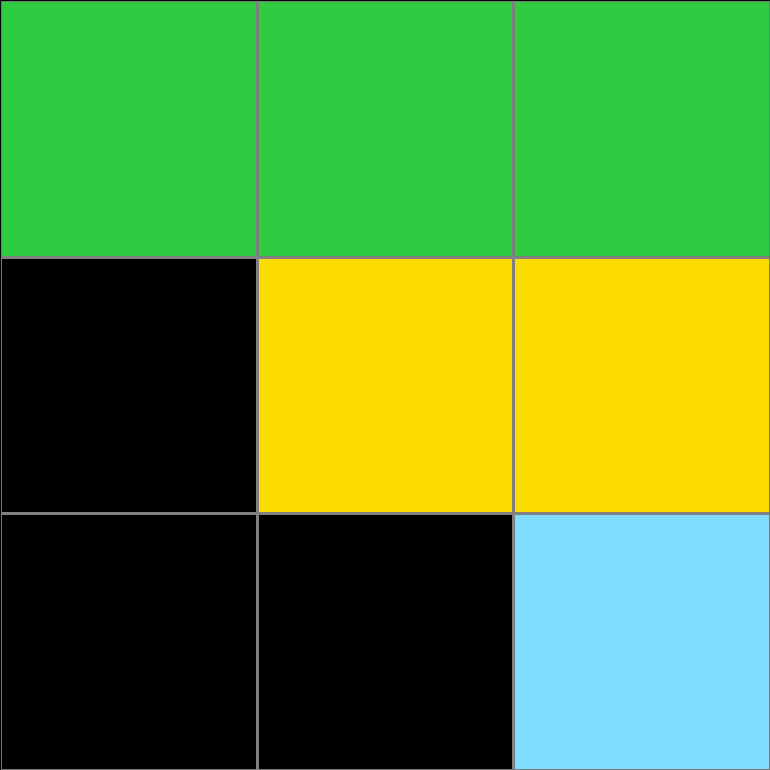
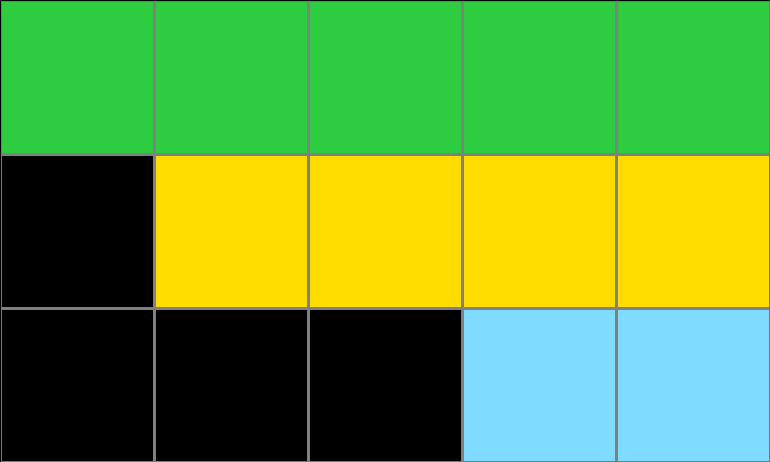
Participant 7
Initial description: A row for each color from the input, sorted vertically by the number of 2x2 or larger squares, with the count of squares aligned to the right.
Final description: A row for each color from the input, sorted vertically by the number of 2x2 or larger squares, with the count of squares aligned to the right.
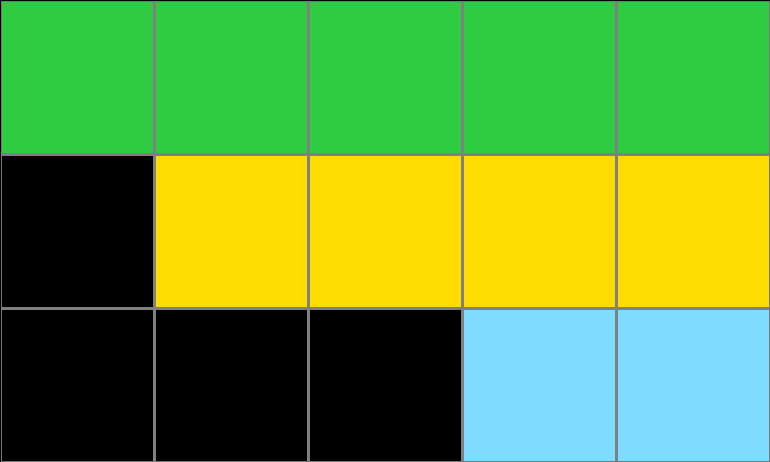
Participant 8
Initial description: Height being the number of colors and length is how many squares in that color.
Final description: Height being the number of colors and length is how many squares in that color.
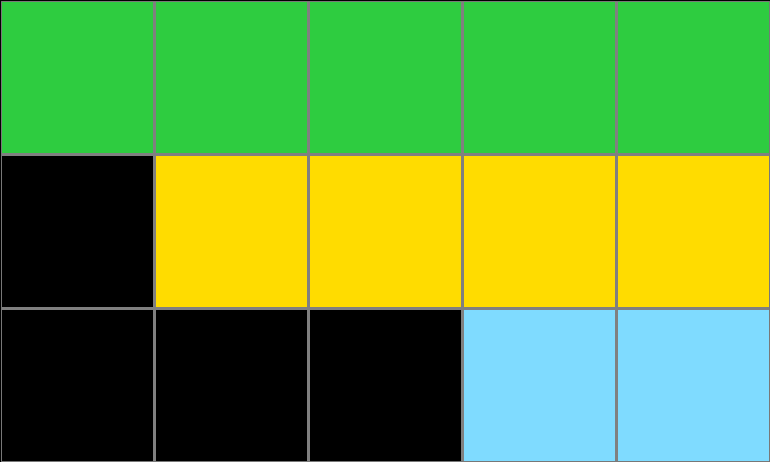
Participant 9
Initial description: Create a grid based on the number of shapes per color with width being based on the color with the most shapes and height being based on the number of colors. Afterward, fill in each row based on how many shapes each color has in the test input.
Final description: Create a grid based on the number of shapes per color with width being based on the color with the most shapes and height being based on the number of colors. Afterward, fill in each row based on how many shapes each color has in the test input.
